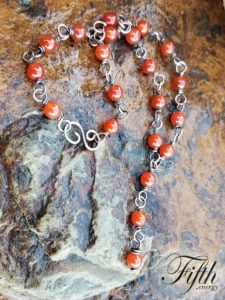 Carnelian was thought to have been named after the color of the cornel cherry. Carnelian, with records dating back over 4000 years, is one of the oldest known gemstones. Carnelian, was highly prized and worn in talisman, amulets, rings and seals by many of the world’s noble people throughout ancient times. Carnelian was worn on the breastplate of Aaron, the first high priest of the Israelites and a prophet in Christian religion. Carnelian played significant roles in ancient Greek, Roman and Babylonian cultures. Napoleon had a carnelian seal that he wore as a lucky charm. In Muslim legend, Mohammed wore a ring set with a carnelian seal, to bring him good luck. In ancient Egypt, polished Carnelian crystal was used in collars and necklaces designed for royalty. Carnelian, a fashion trend in the second century, was carved into cameo rings that depicted personal emblems or figures of gods.
Carnelian was thought to have been named after the color of the cornel cherry. Carnelian, with records dating back over 4000 years, is one of the oldest known gemstones. Carnelian, was highly prized and worn in talisman, amulets, rings and seals by many of the world’s noble people throughout ancient times. Carnelian was worn on the breastplate of Aaron, the first high priest of the Israelites and a prophet in Christian religion. Carnelian played significant roles in ancient Greek, Roman and Babylonian cultures. Napoleon had a carnelian seal that he wore as a lucky charm. In Muslim legend, Mohammed wore a ring set with a carnelian seal, to bring him good luck. In ancient Egypt, polished Carnelian crystal was used in collars and necklaces designed for royalty. Carnelian, a fashion trend in the second century, was carved into cameo rings that depicted personal emblems or figures of gods.
Carnelian, also referred to as chalcedony quartz belongs to the cryptocrystalline branch of quartz. Carnelian has a distinct color of red-orange to brownish-red and obtains its color through iron impurities that form within colorless quartz crystal. The most significant sources of Carnelian include Brazil, Uruguay, India, Madagascar and the United States (Oregon and New Jersey).
Chemical Formula: SiO2 – Silicon dioxide
Color: Brownish-red, red, orange, yellow-orange
Mohs Scale: 6.5 – 7